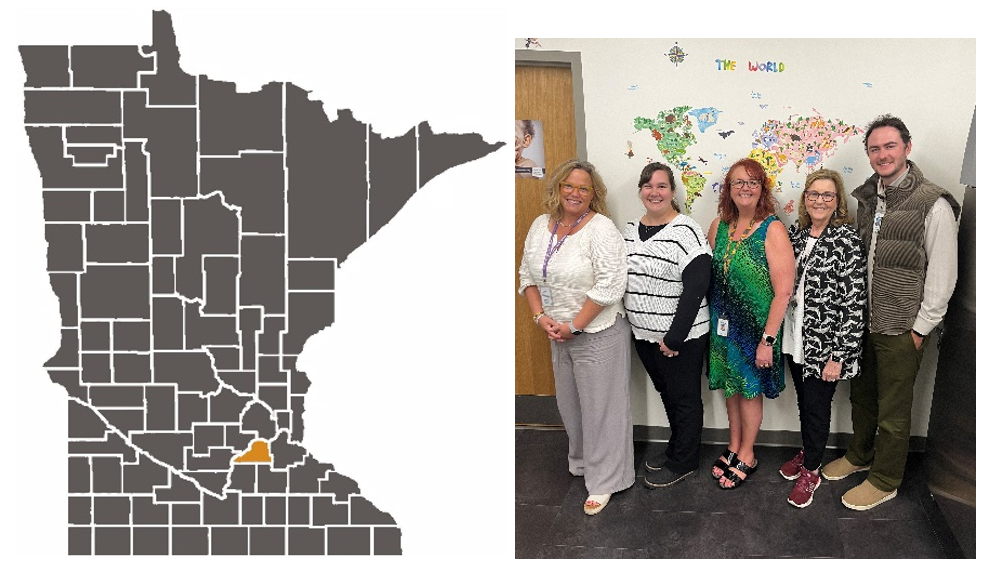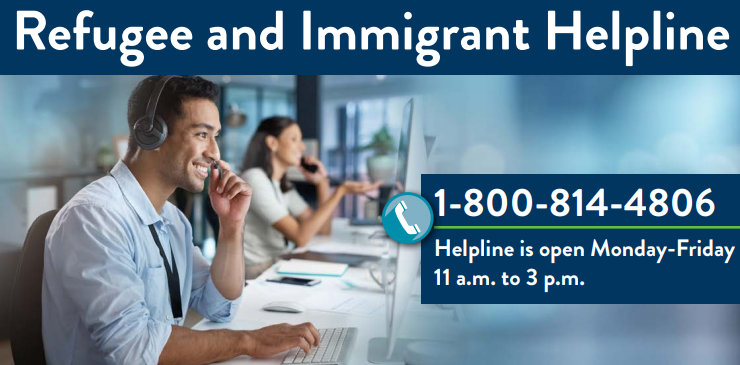|
The Advisory Committee on Immunization Practices (ACIP) recommends that adults receive a single dose of a tetanus toxoid, reduced diphtheria toxoid, and acellular pertussis (Tdap) vaccine and a booster dose of tetanus and diphtheria toxoids (Td) or Tdap vaccine every 10 years or when indicated for wound management.1,2 In 2012, in an effort to reduce the burden of pertussis in infants, ACIP recommended a dose of Tdap for women during each pregnancy.3
Prior to a guidance update on April 9, 2024, most refugees were only offered Td vaccine overseas as part of the Overseas Vaccination Program for U.S.-bound Refugees4 and were due for a Tdap at the time of their domestic medical examination (DME), a post-arrival health screening that generally occurs within 90 days of U.S. arrival.
Among the 4,265 adult primary refugees who arrived in Minnesota from 2019 to 2023 and received a DME, 3,271 (77%) arrived without documentation of ever having received a Tdap vaccine. The summary of Tdap receipt by country origin is described in Table 1. Among those who did not receive Tdap overseas, 40% (N=1,293) received a Tdap vaccine at their DME. Among the 1,968 arrivals who did not receive Tdap overseas or in Minnesota, 779 (40%) received at least one other vaccination at their DME, indicating a missed opportunity for Tdap vaccination. The low rate of Tdap receipt among those due for the vaccine could be attributed to vaccine refusal, provider misunderstanding of vaccination requirements (not realizing that a refugee was due for a Tdap when they had received Td overseas), or electronic medical records failing to flag that an adult refugee was due for Tdap vaccine.
Following the April 9, 2024, guidance update, the Centers for Disease Control and Prevention’s (CDC) panel physicians will begin offering Tdap vaccine overseas to eligible refugees. This change should increase the coverage of Tdap among newly arrived refugee adults and reduce confusion over vaccine requirements at the time of the DME.
Table 1. Tdap Receipt Overseas among Adult Refugee Arrivals to Minnesota by Country of Origin, 2019-2023
|
Country of Origin
|
Number of arrivals 18+ years of age who received a DME
|
Received Tdap overseas (%)
|
Did not receive Tdap overseas (%)
|
Received Tdap in Minnesota (%)*
|
|
Afghanistan
|
772
|
646 (84%)**
|
126 (16%)
|
75 (60%)
|
|
Burma
|
445
|
2 (<1%)
|
443 (>99%)
|
236 (53%)
|
|
DR Congo
|
270
|
8 (3%)
|
262 (97%)
|
166 (63%)
|
|
Eritrea
|
97
|
10 (10%)
|
87 (90%)
|
50 (57%)
|
|
Ethiopia
|
267
|
10 (4%)
|
257 (96%)
|
110 (43%)
|
|
Guatemala
|
54
|
51 (94%)
|
3 (6%)
|
2 (67%)
|
|
Moldova
|
50
|
5 (10%)
|
45 (90%)
|
8 (18%)
|
|
Somalia
|
624
|
94 (15%)
|
530 (85%)
|
266 (50%)
|
|
Syria
|
89
|
1 (1%)
|
88 (99%)
|
51 (58%)
|
|
Ukraine
|
1,206
|
85 (7%)
|
1,121 (93%)
|
167 (15%)
|
|
Other***
|
391
|
82 (21%)
|
309 (79%)
|
172 (56%)
|
|
Total
|
4,265
|
994 (23%)
|
3,271 (77%)
|
1,303 (40%)
|
*Only includes those who did not receive Tdap overseas.
**Most Afghan parolee arrivals received Tdap at a U.S. safe haven prior to resettlement in Minnesota. These are counted as “overseas” vaccinations in this table.
***"Other" includes Belarus, Bhutan, Cambodia, Cameroon, Central African Republic, Chad, China, Colombia, Cuba, Dominican Republic, Egypt, El Salvador, Ghana, Guinea, Haiti, Honduras, Iran, Iraq, Ivory Coast, Jamaica, Kazakhstan, Kenya, Laos, Liberia, Mexico, Nepal, Nicaragua, Nigeria, Pakistan, Russia, Rwanda, South Sudan, Sri Lanka, Sudan, Tajikistan, Togo, Turkey, Uganda, Uzbekistan, Venezuela, Vietnam, West Bank, and Yemen.
References
- Broder KR, Cortese MM, Iskander JK, et al. Preventing tetanus, diphtheria, and pertussis among adolescents: use of tetanus toxoid, reduced diphtheria toxoid and acellular pertussis vaccines recommendations of the Advisory Committee on Immunization Practices (ACIP). MMWR Recomm Rep 2006;55(No. RR-3):1–34.
- Kretsinger K, Broder KR, Cortese MM, et al. Preventing tetanus, diphtheria, and pertussis among adults: use of tetanus toxoid, reduced diphtheria toxoid and acellular pertussis vaccine recommendations of the Advisory Committee on Immunization Practices (ACIP) and recommendation of ACIP, supported by the Healthcare Infection Control Practices Advisory Committee (HICPAC), for use of Tdap among health-care personnel. MMWR Recomm Rep 2006;55(No. RR-17):1–37.
- CDC. Updated recommendations for use of tetanus toxoid, reduced diphtheria toxoid, and acellular pertussis vaccine (Tdap) in pregnant women—Advisory Committee on Immunization Practices (ACIP), 2012. MMWR Morb Mortal Wkly Rep 2013;62:131–5.
- CDC. Vaccination Program for U.S.-bound Refugees and Visa 93 (V93) Applicants. 15 May 2024. https://www.cdc.gov/immigrant-refugee-health/hcp/overseas-guidance/vaccination-program.html. Accessed 30 July 2024.
Minnesota continues to receive families through Welcome Corps, the private refugee sponsorship program launched in early 2023. Minnesota leads the country in private sponsor group applications and has recently welcomed the state’s first arrivals through the Naming Phase in which sponsors support someone they know. To support potential Welcome Corps sponsors in Minnesota, the Refugee Health Program created frequently asked questions (FAQs) for health-related questions on the sponsorship application. Access these FAQs and additional resources for sponsors at Refugee Health Community Partners and Sponsors.
More about Welcome Corps:
Following additional congressional allocations, Ukrainian humanitarian parolees paroled into the United States between Feb. 24, 2022, and Sept. 30, 2024, are eligible for Office of Refugee Resettlement (ORR) benefits. Read eligibility details in ORR Policy Letter 22-13, Ukrainian Humanitarian Parolees Eligible for ORR Benefits and Services.
World Refugee Day occurs annually on June 20. The Refugee Health Program spoke with two refugees, Hsa Hser Ku and Jima Gai Machar, who have made Minnesota their home. Join us in celebrating and amplifying their voices by reading their stories!
 Scott County Public Health team – from left to right: Stacy Ward, RN PHN; Ivy Ghandour, RN PHN; Jodi Leraas, RN PHN Public Health Supervisor; Marie Maes-Voreis, RN PHN; Michael Garber, Community Health Specialist.
Scott County is in the southwest region of the seven-county Twin Cities metro area. Its county seat and largest city is Shakopee, though most of the county has a rural feel. We spoke with Marie Maes-Voreis, a nurse with Scott County Public Health, to learn about her experience serving newcomers in Scott County.
When the COVID-19 pandemic hit, Marie was a retired nurse and felt called to help her community. She re-entered the health care workforce, joining the Scott County Public Health team. As the pandemic eased, Marie shifted her focus from vaccinations to assisting newcomers. Decades of experience working at the Hennepin County Medical Center, frequently serving newcomers, left her well-prepared for the work.
Marie told us that public health work in Scott County is a team effort, with staff utilizing their expertise to work across teams and support residents with a variety of needs. This cross-coverage has been especially important with the increase in refugees living in Scott County over the past year. From public health departments to resettlement agencies to clinics, Marie says, “Everybody is busy…We’ve all learned new systems to make things more efficient.” The Scott County team promotes newcomer health by scheduling refugee health assessments, providing immunizations and referrals for treatment, conducting home visits, and more.
When asked about her favorite part of serving newcomers, Marie said, “I just love getting to know them and having them feel welcomed and that there is someone they can go to… I love seeing how their life was and what it could become. If they learn to trust us as people and as representatives of Scott County, when bad things happen, they’ll trust us to support them... It’s been very nice to build those relationships, to learn about their cultures, and to have them learn from me… I’ve always loved being a nurse. So, taking care of them and helping them figure out how to feel better is important… My grandpa was an immigrant. It’s really important to understand what they give to our society.”
New languages: Health Care Before International Travel video
Our team is excited to share that the Health Care Before International Travel (YouTube) video is now available in Spanish, Hmong, and Somali, in addition to our English version. No matter your destination, visiting a travel clinic is important and will help keep you and your family safe while traveling! This video can be broadcasted on a TV, sent via text message, or played on a cellphone. Help keep our community safe during and after international travel!
Access the translated videos and more resources on traveling:
Travel Clinic FAQ
Dr. Megan K. Shaughnessy, MD, MS, CTropMed® and CTH® is the medical director of the International Travel Medicine clinic at Hennepin Healthcare (HCMC) and an infectious disease staff physician and associate professor of Medicine at the University of Minnesota. We sat down with Dr. Shaughnessy for a Q&A covering our most asked traveler’s health questions! Read more about why you should visit a travel clinic, what to expect at a travel clinic, and more at Tips from a Travel Clinic Physician.
Minnesota Malaria Stories: Visit a Travel Clinic
In the last few years, we've seen more cases of malaria in Minnesota from international travel. Malaria can make both children and adults very sick, and can also lead to missing important life events, as Simone knows! She shares the story of getting malaria as a child when visiting family back home in Liberia.
Interpreter Vendor Directory for Rare Languages
The Minnesota Center of Excellence in Newcomer Health will develop a searchable directory of vendors that offer interpretation services for languages not commonly spoken in the U.S., or "rare languages." The Interpreter Vendor Directory for Rare Languages is intended to be used by health care providers and community partners in need of rare language interpretation services.
Please use the Interpreter Vendor Directory for Rare Languages Form to suggest languages to add to the directory and/or to provide information about vendors that offer interpretation services for rare languages. New submissions may be added to the directory after verification. You may access the current vendor directory via the Excel link at the top of the form.
Resources from the Minnesota Department of Human Services
The Refugee and Immigrant Helpline offers free assistance connecting with local resources, getting referrals to Resettlement Network Services, and answering questions. Assistance is available in English, Ukrainian, Russian, Spanish, and other languages.
 The Information for Newcomers in Minnesota flyer lists phone numbers to find assistance with legal services, food, health, school enrollment, and more.
Check out the state of Minnesota’s Welcome Guide for Newcomers which includes important information and resources to help newcomers settle in.
|